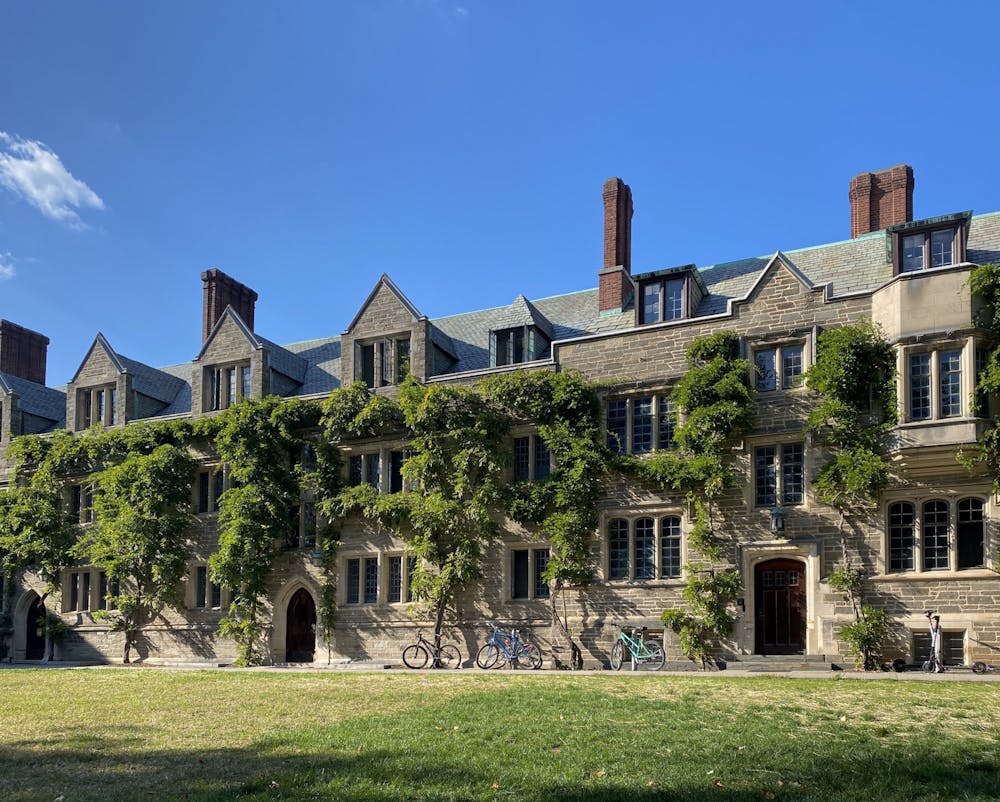For rising sophomores, juniors, and seniors, some of the most stressful moments of the academic year do not come during midterms week, finals period, or course registration. They come in the weeks following spring break, when undergraduates must select a room for the following year: a process that involves diligently researching the available rooms, plotting with friends and potential roommates, and selecting rooms within a three-minute window.
There are 1,890 rooms on the available rooms list. The Daily Princetonian broke down room types and occupancies in each residential college and building.
In the weeks leading up to room draw, Princeton Housing and Real Estate Services released a list of all rooms available to rising sophomores, juniors, and seniors to draw for the 2023–2024 academic year. The available rooms list is updated throughout the room draw period as rooms are gradually drawn into. The list spans 1,890 singles, doubles, triples, quads, quints, and six-person suites. Not included in the list are rooms set aside for first-years and residential college advisors, as well as rooms already granted to students with housing accommodations.
Over 200 single rooms have already been granted to students who requested medical accommodations per an email chain unintentionally sent to students in February. These rooms are not on the available rooms list, meaning that the true number of singles in the University’s dorms is likely higher.
The ‘Prince’ analyzed the list of rooms available, calculating the square feet per person by dividing the total square feet of rooms by the number of occupants. The ‘Prince’ then noted the draw each room was in, whether in a residential college or in the upperclass draw. 99 Alexander Street is only open to independent upperclass students, but is part of the Forbes College room draw. For this analysis, it is included as a dorm within Forbes.

The largest room draw count by the number of rooms available is, by far, the upperclass draw, with 902 rooms available for rising juniors and seniors. Among residential colleges, New College West (NCW) offers the most rooms to draw with 174 rooms. Rockefeller and Mathey offer the fewest number of rooms available to current Princeton students, with 110 and 125 rooms eligible to be drawn, respectively.
Last year, the University began allowing juniors and seniors not on the University meal plan to continue to live in their residential colleges. Students could put in applications to both the upperclass draw and all residential colleges, regardless of their dining plan. This year, however, the University restricted upperclass residential college draw applications to solely the student’s original college.

The majority of rooms in each draw are singles except for Forbes, where a majority of available rooms are doubles. This is due to Forbes’ history as an inn before it was acquired by the University in 1970 for student housing.
There are numerous differences between the older colleges and those constructed more recently. Only about half of the rooms available in Rockefeller and Mathey are singles, while two-thirds or more of the available rooms in the Butler, New College West, Whitman, and Yeh draws are singles.
Among the residential college draws, Forbes has the highest average square footage per person at nearly 154 square feet per person. The square footage per person is comparable across residential colleges, with Rockefeller having the lowest average square feet per person at 144. Rooms in the upperclass draw average 161 square feet per person, the highest of any draw. This average is raised by Spelman Hall, which has the largest per person rooms on campus, averaging 232 square feet per person. Many Spelman dorm rooms include a private kitchen and bathroom.
The largest room on campus is Patton Hall T12, a six-person suite with over 1,278 square feet of space. Five of the ten largest rooms on campus are Whitman quads, with the 52 quads in Spelman sharing the 8th spot at 930 square feet.
The smallest room on campus is Pyne Hall 230, clocking in at just 82 square feet. All of the smallest rooms on the available rooms list are singles. Eight of them are in the upperclass draw, while one is in Mathey and one in Forbes.
Students can search for buildings to draw into and compare options on the Housing and Real Estate Service website, although Yeh and NCW dorms are not listed. The TigerApps website TigerDraw contains data on all dorm rooms, including occupancy, square footage, and room reviews.
Room draw began this week on Monday, March 20, and will continue until Friday, April 7. After a student’s room selection date, they can place their name on the waitlist if they were unable to draw a room or if they did not apply for a room by the deadline. The order of the waitlist is determined by a student’s original room draw rank. If a waitlist application has been filled out before the May 1 deadline, housing is guaranteed and assignments will be released over the summer.
Andrew Bosworth is a Data contributor for the ‘Prince.’
Please direct any corrections requests to corrections[at]dailyprincetonian.com.








